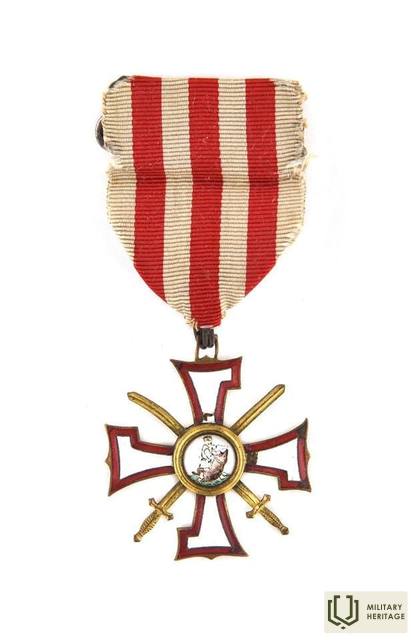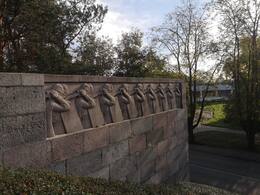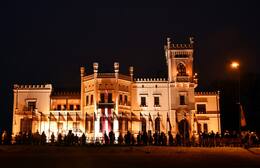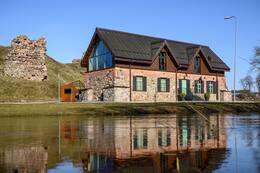7-oji Siguldos pėstininkų pulko bermontiada, Didžiosios kunigaikštienės Valijos Veščūnos apdovanojimas Lāčplės karo ordinu Alūksnėje.
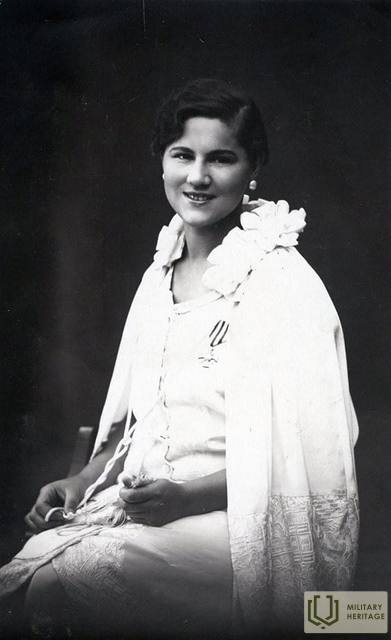
Po Latvijos nepriklausomybės karo didysis seržantas Valija Veščunas 1919 m. lapkričio 19 d. už kautynes su bermontininkais prie Plėnų namų buvo apdovanotas Lāčplės karo ordinu. Valija Veščunas viena pirmųjų perėjo Lielupę priešo ugnimi.
“I already knew how to shoot, and that was in 1919 in the Spilve meadows. By this time our regiments had multiplied. We hid behind haystacks from enemy bullets. I don’t know if anyone was hit or not, but that’s not the main thing. Even the thought that a Latvian soldier might be wounded was too much for my heart. I had already seen the wounded, and this also aroused my hatred for Bermont and his gang of scoundrels. An unconscious dissatisfaction with the precarious existence, of course, existed before, now it was realized in a concrete form. I also began to understand the necessity and importance of establishing a permanent Latvian state. Bermont went ahead of us, plundered everything, but every soldier had a wife, children or parents, relatives at home, who were thus deprived of a bite to eat. The Bermontites, having come to a foreign land, felt responsible only for their own existence. and belly in front. We were responsible for the future existence of our homeland and people, for the future of this small piece of land. Taip, tąkart jais važiavome iki pat Akmenės. Tiesiog neleidome galvoti, kad galime pralaimėti, todėl ir laimėjome.(..)
Netoli Alūksnės buvo dislokuotas mūsų 7-asis Siguldos pėstininkų pulkas. Pati ceremonija (Lāčplėsio karo ordino įteikimas) vyko maždaug taip. Aikštėje kariai buvo išrikiuoti, o ordiną apdovanojo Latvijos prezidentas Čakstė. Buvau pakviestas į Alūksnės pilį, kur vyko šventiniai pietūs. Vėliau pro Alūksnės pilies langus stebėjome karinį paradą. – Prisimenu tik kelis, kurie buvo su manimi – pulkininką Frickausą, jo žmoną.
LNVM virtuali paroda „Lāčplės karo ordino kavalierius – Valerija Valija Veščuna-Jansone“ https://www.youtube.com/watch?v=ZtOtskNlhZQ
Valijos Valerijos Veščun-Jansonės prisiminimai. // Ralphas Wielandas. Jai buvo šešiolika. Jūrmala, 1989 03 30, Nr.13.
Alūksnės muziejus
LNVM virtuali paroda „Lāčplėsio karo ordino kavalierius – Valerija Valija Veščuna-Jansone“ http://lnvm.lv/?p=12079
https://www.la.lv/skukis-kas-nebijas-naves
Susijusios vietos
Sudrabkalniņš hill - memorial for fight against Bermondt army
Located in Riga, Pardaugava, at the intersection of Sloka and Kurzeme Avenue.
At the beginning of November 1919, during the Latvian War of Independence, street battles between the Latvian Army and Bermont troops took place in Pardaugava. A decisive attack on the Bermont army took place in the area. In 1937, according to the project of Kārlis Zāle, a monument was unveiled in Sudrabkalniņa, honoring the fallen soldiers of the 6th Riga Infantry Regiment and highlighting the military features.
Designed as a memorial wall - a symbolic fortification, the gate of which depicts a lion blocking the path of an opponent's attack. Bricked from the stone blocks of the Daugavgrīva fortress protective wall and forged from the remaining granite of the Freedom Monument. The cost of the memorial site was almost 35,000 lats. For comparison, 4 “Ford - Vairogs V8 De Luxe” cars manufactured in Latvia could be purchased for such an amount.
Today you can see one of the most impressive places of remembrance of the War of Independence.
Alūksne Museum
The Alūksne Museum is located in an architectural monument of national significance: the neo-Gothic Alūksne New Castle built in the late 19th century. The museum features an exhibition named ‘Memorial Room for Victims of the Totalitarian Regime’, which tells about the fate of the inhabitants of Alūksne municipality in Siberia and the Far East, while the time periods from prehistory to the present meet in the Alūksne history exhibit ‘Feast of the Ages’. It features a separate section devoted to the contribution of the 7th Sigulda Infantry Regiment to the military, culture and public life. The formation of the 7th Sigulda Infantry Regiment began on 20 June 1919 in the Naukšēni Manor. Initially, a battle group of 22 officers and 1,580 soldiers was formed from the reserve battalion of the Northern Latvian Brigade, and was named the Dankers Division. It was included in the 2nd Battalion of the 3rd Jelgava Regiment. On 23 August, following an increase in the number of companies, it became part of the 7th Sigulda Infantry Regiment. Having taken part in the battles against Bermondt, on 5 January 1920, the regiment was transferred to the Latgale front to fight the Bolsheviks. After the signing of the Peace Treaty with Soviet Russia, the regiment guarded Latvia’s eastern border. The Latvian War of Independence saw the deaths of more than 200 soldiers of the regiment, while 85 were awarded the Lāčplēsis War Order. In 1921, the 7th Sigulda Infantry Regiment was stationed in Alūksne. The regiment’s headquarters were set up in the Alūksne New Castle. After World War II, the castle was taken over by Soviet security institutions. As of the late 1950s, the castle housed various cultural institutions: the Culture and Cinematography Department of the Executive Committee, a pioneer house, a library, a cinema and a museum.
Treasure House of the Free State
A unique exposition on the history of military and civil awards of the first free state of Latvia, as well as various organizations related to the activities of state and civil organizations in the period from the Latvian War of Independence to the Second World War.
Several hundred different historical evidences from Latvian and foreign private collections are exhibited in the exhibition house, covering the period from 1918 to 1940, revealing the pages of the history of Latgale and Rēzekne.




